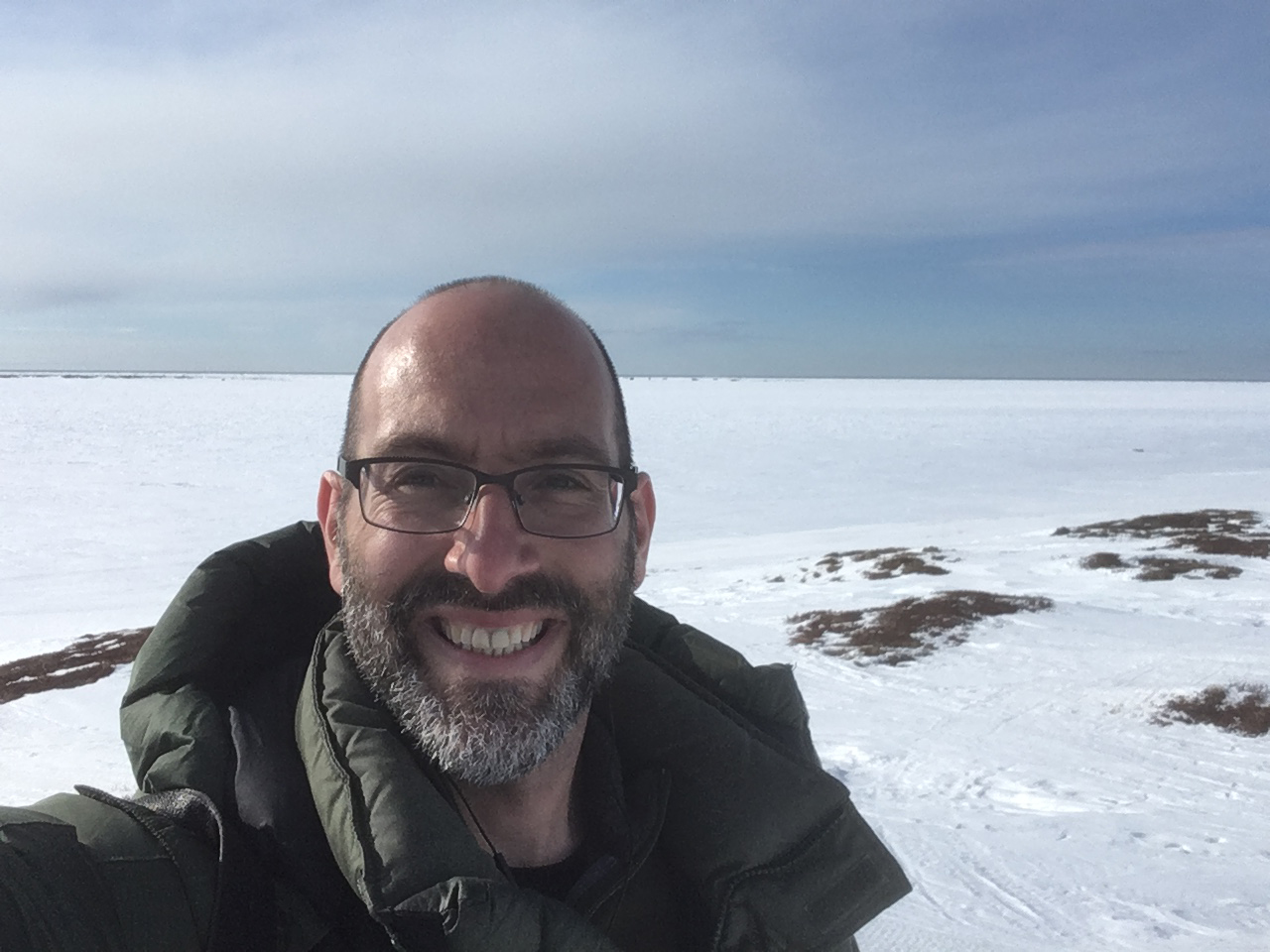Next Stop Point Lay
Published by Ocean Conservancy
Several weeks ago, Henry Huntington, Andrew Hartsig, and I traveled to Utqiaġvik to meet with leaders and others in the community. After Henry and Andrew left for home, I continued on to Point Lay. This village in the North Slope Borough is about 300 miles west and south of Utqiaġvik along the Chukchi Sea coast. It has a population of roughly 250 people, most of whom are Iñupiat, and more than 100 of whom are school age children or younger. It is one of the most remote villages in Alaska.
One of my friends from Juneau is the principal of the school in Point Lay, and I took the opportunity of being in Barrow to visit Zach, his wife Rebecca, and their 15-month-old daughter Ayla.
My visit occurred at a particularly meaningful and exciting time in the village. The two whaling crews were preparing to go back out on the ice. They had been out for a few days, and had come back in when the wind picked up. As with all of the villages along the coast, this traditional practice is the centerpiece of a subsistence—the way a community eats and the way it ensures cultural continuity.


As it was explained to me, a whale gives itself to the crew. If that happens, the whole village goes out on to the ice to help. Despite the optimism and good weather, the crews were still out when I left.
In addition to whales, walrus are also important in Point Lay. In recent years, walrus have begun to haul out in large numbers along the coast. Scientists believe this behavior results from the lack of sea ice available in late summer, which is due to climate change. When walrus haul out in large numbers on shore, they are particularly susceptible to disturbance, which can trigger a stampede. In a stampede, young and older, infirm walrus are at risk of being trampled.
My trip happened to overlap with a visit from walrus biologists from the U.S. Fish & Wildlife Service. The visiting biologists had developed a program with students from the school to monitor the walrus when they haul out and to try to identify the causes of stampedes, and there is an ongoing effort to prevent disturbances when the walrus are hauled out. Several years ago, the village of Point Lay was given an “Outstanding Partner” award from the federal agency in recognition of these efforts.
In addition to the walrus hauling out, there are many other clear signs of change in Point Lay. Buildings are subsiding as permafrost melts. The stairs in the house pictured below used to reach the ground—they are now almost six feet above it. Similarly, the water and sewer system only serves about half the community because pipes have broken and there is neither the money nor equipment to repair them. People see differences in the snow, the weather and the animals. These changes affect every aspect of life in Point Lay—from food to housing to jobs.
I am richer for my experience in Point Lay and am especially grateful for the people who took time to talk with me and show me their lives. I am planning to bring back what I saw, learned, and heard to the Governor’s Climate Action for Alaska Leadership Team and look forward to my next visit!
Sign up for our emails!
The post Next Stop Point Lay appeared first on Ocean Conservancy.
Read the full article at: https://oceanconservancy.org/blog/2018/05/10/next-stop-point-lay/


